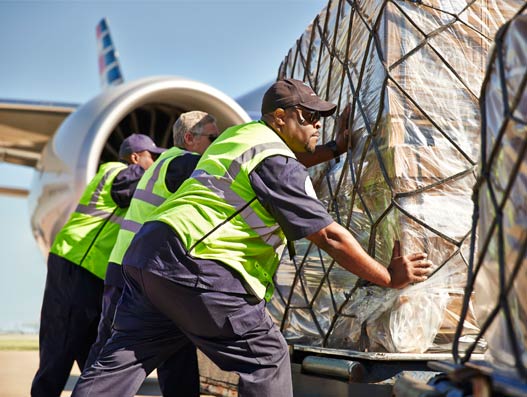
Recovery Reinforced
After a stagnated growth for several years the world air cargo market appears to pick up growth momentum and the forecast is positive. However, the industry is not completely insulated from the blips of the global economy. Since the onset of world economic crisis of 2008, growth in world air cargo traffic has been extremely […]

After a stagnated growth for several years the world air cargo market appears to pick up growth momentum and the forecast is positive. However, the industry is not completely insulated from the blips of the global economy.
Since the onset of world economic crisis of 2008, growth in world air cargo traffic has been extremely slow and at times stagnated around a minor growth rate. According to reports the industry did rebound more than 19 percent in 2010 in comparison to the depressed levels of 2009. Therefore, the average rate of growth per year from 2008 through 2013 is about 1.7 percent.
According to Boeing’s biennial World Air Cargo Forecast world air cargo traffic began to grow again in second quarter 2013. By July 2014, traffic had grown 4.4 percent compared with the first seven months of 2013. “Forecasts for even better economic and trade growth should lead to sustained air cargo traffic growth in 2015 and 2016,” the forecast noted.
The health of the world air cargo industry is completely dependent on the performance of world economy and trade growth. The Boeing forecast also takes note of the world GDP, which is an important measure of economic performance and a crucial indicator of long-term air cargo traffic trends.
“When economic recovery became discernible in the second half of 2013, trade volumes began to accelerate, particularly in Asia. After faltering during the first quarter of 2014, trade growth picked up again during the second quarter. The forecast that world merchandise trade growth will hover around historic rates supports the long-term outlook for continued world air cargo traffic growth,” said the report. Additionally, the report said over the next 20 years, world air cargo traffic will grow 4.7 percent per year.
“Overall, world air cargo traffic will increase from 207.8 billion RTKs in 2013 to 521.8 billion in 2033. Asia will continue to lead the world in average annual air cargo growth, with domestic China and intra-Asia markets expanding 6.7 percent and 6.5 percent per year, respectively. The Asia–North America and Europe-Asia markets will grow slightly faster than the world average growth rate,” the report said.
It is important to read the Boeing report and forecast in line with the latest assessment of the air cargo industry by the International Air Transport Association (IATA).
IATA’s freight tonne kilometre (FTK) figures estimate global air freight in the first half of 2014 at 4.1 percent. IATA’s Airline Industry Forecast for 2014-2018 shows that international freight volumes are expected to increase at a compound annual growth rate (CAGR) of 4.1 percent over the next five years.
“Air cargo remains as vital to the global economic system as ever. This year, more than $6.8 trillion worth of goods, equivalent to 35 percent of total world trade by value, will be transported around the world by air,” said Tony Tyler, IATA’s Director General and CEO.
Tyler, in the report, drew attention to trade protectionism which could severely stifle the growth numbers. According to the World Trade Organization (WTO), between November 2013 and May 2014 alone, 112 new trade-restrictive measures were enacted by G20 governments.
Virgin Atlantic Cargo said overcapacity is hurting the air cargo market. “In terms of revenue, we are slightly ahead of our target for the year, but the level of capacity some airlines are bringing onto the main markets is driving yields down to a level that will be unsustainable for many operators,” John Lloyd, director of cargo, said. “This needs to be seen as a warning message for the industry.” Virgin Atlantic Cargo saw tonnage rise one percent in the first six months of 2014 to 111,196 tonnes and saw a three percent increase in its load factor to 76 percent network-wide.
The Cathay Pacific Group’s cargo revenue for the first half of 2014 was HK$11,663 million, a rise of 3.4 percent compared to the same period in the previous year. Yield for Cathay Pacific and Dragonair decreased by 6.9 percent to HK$2.17. Capacity increased by 10.8 percent, while the load factor rose by 0.8 percentage points to 63.2 percent.
United Airlines, which logged 227,445 cargo tonne miles (CTMs), had an increase of 15.8 percent over the same month a year ago. American Airlines reported cargo traffic up 4.9 percent to 213,371 CTMs. But for the cargo division of Delta Air Lines the traffic was down 0.9 percent to 214,679 CTMs. Air Canada’s cargo revenue for the third quarter was $128 million, up 6.5 percent from 2013. It registered a 6.9 percent increase in traffic, buoyed by strong demand from North America to Europe.
AirBridgeCargo Airlines (ABC) is on course for another year of record growth, reinforcing its position as one of the world’s fastest-growing all-cargo airlines. In the first nine months of 2014, ABC carried 290,735 tons, a 14 percent increase over the same period last year.
“As a global airline operating in Europe, North America and Asia Pacific, we are not immune from the downturn in international economies. However, this has challenged us to focus even more on developing and implementing new business opportunities and solutions that have given us a platform for growth. Our priority remains to deliver the highest levels of customer service, supported by the operating efficiencies of our modern aircraft fleet, because customer satisfaction is the key to us realising our market leadership ambitions,” said Denis Ilin, executive president, AirBridgeCargo Airlines.

